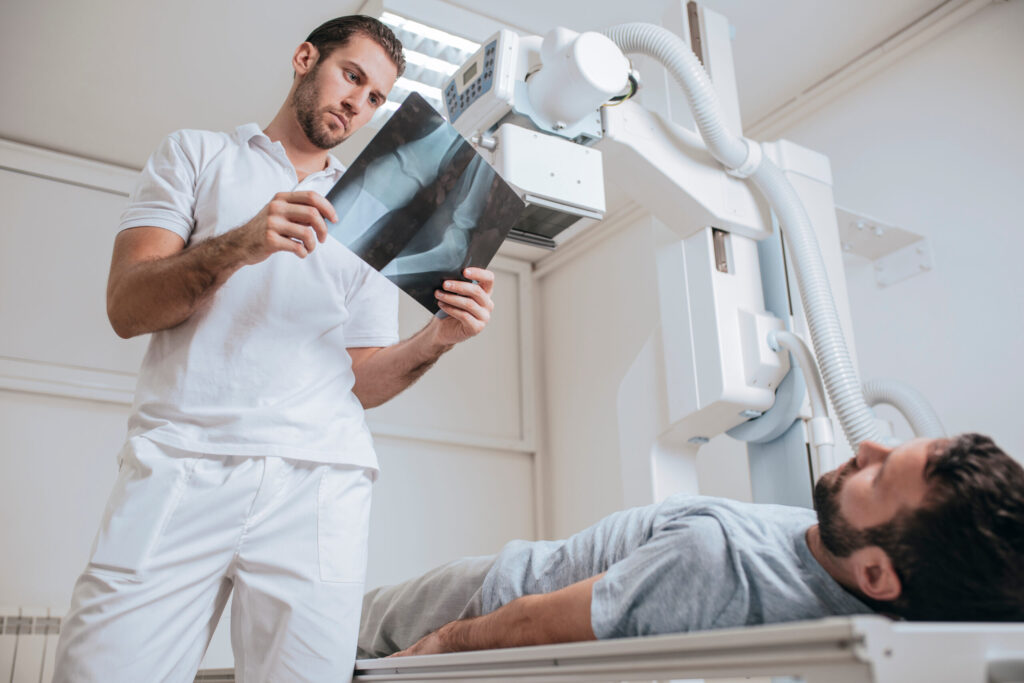In today’s fast-paced healthcare world, digital x-rays have become a vital tool. They offer clear advantages over traditional methods, playing a key role in better diagnostics and patient care. With detailed images and less radiation exposure, they ensure accurate results and a safer experience for patients. Embracing this technology is essential for modern medicine to deliver effective treatments. As we explore this innovation further, we’ll see why transitioning to digital is a smart move for anyone prioritizing health and safety.
Introduction to Digital X-Rays
The shift from film-based x-rays to digital x-rays marks a significant advancement in medical imaging. Time and technology have propelled this transition, aiming at enhancing precision in diagnosing various health conditions. In earlier times, traditional x-rays relied on film, requiring chemical processing and careful storage. This process was not only time-consuming but also limited in terms of image clarity. Digital x-rays simplify this, offering instant results and clear images.
Health professionals now favor this technology for its precision and efficiency. Importantly, it allows doctors to safely analyze health issues early on, giving patients a head start in treatment. The use of digital x-rays ensures lower radiation exposure, which is crucial to patient safety. Swapping out older methods for modern digital tools means quicker diagnostics, better decisions, and safer medical care overall.
Differences Between Traditional and Digital Dental X-Rays
Making the switch from traditional to digital x-rays in dental care offers noticeable improvements. Digital images are sharper, aiding in spotting issues early. Plus, the setup involves less exposure to harmful rays, which is safer for everyone involved. These benefits collectively improve patient outcomes. The ease of storing and accessing digital xrays is significant, as they provide an essential resource for ongoing patient care.
Image Quality: Unveiling Hidden Details
One of the standout benefits of digital x-rays is their incredible clarity. Digital images are much sharper than their film counterparts. This higher resolution aids medical experts in identifying problems early and accurately. When doctors can see images clearly, they can spot even minor issues that might go unnoticed otherwise.
- Clarity: Digital X-rays deliver high-resolution images that reveal intricate details.
- Precision: Doctors can diagnose earlier with precision, leading to quicker medical responses.
- Efficiency: Eliminates the guesswork, enhancing the ability to form effective treatment plans.
Spotting potential health issues early makes a big difference in treatment success rates. Whether looking at teeth in a dentist’s clinic or examining bones in a hospital, clearer images mean better care. Digital x-rays empower healthcare providers to make informed decisions, ensuring patients get the best treatment plans possible. This precision in diagnosis helps tailor personal treatment strategies, potentially reducing complications and advancing health outcomes.
Radiation Exposure: A Step Towards Safer Diagnostics
Another key advantage of digital x-rays is the significantly lower radiation exposure compared to traditional film methods. Lower radiation levels mean a safer experience for patients, especially those who require frequent x-rays for monitoring ongoing health conditions. By reducing the exposure, digital x rays highlight a commitment to putting patient safety first.
Reducing long-term risks associated with radiation is vital. Digital imaging achieves this by lowering cumulative exposure, which is beneficial in reducing potential radiation-related health concerns. With the move toward fewer harmful emissions, patients can feel more at ease during their diagnostic procedures, knowing they are being protected and cared for responsibly.
Processing Time: Efficient Diagnosis and Treatment Planning
The efficiency of digital x-rays is unmatched. Unlike traditional x-rays that need developing time, digital images are available immediately. This speed enables doctors to diagnose conditions quickly, allowing for prompt treatment development.
Quick access to x-ray results means doctors can jumpstart treatment plans without delays. Patients benefit through reduced waiting times, ideally leading to better recovery journeys and overall health outcomes. With fast results, there’s reduced anxiety, which promotes a more comforting patient experience and improves the efficiency of healthcare delivery.
Storage and Accessibility: Seamless Record Keeping
Digital x-rays offer seamless storage solutions. Rather than dealing with bulky physical files, healthcare providers can store images digitally. This ease of access simplifies patient record keeping, facilitating ongoing care with comprehensive historical health data always available.
- Accessibility: Easily retrieve patient records, improving continuity of care.
- Environmental Benefits: Reducing paper use and storage costs are an added advantage.
The switch to digital records is not only environmentally friendly but also enhances the quality of healthcare service. Minimizing the risk of losing important data ensures that healthcare professionals can deliver continuous, coordinated care. In an age where timely access to information is critical, digital x-rays provide a valuable resource for medical practitioners.
The Digital X-Ray Process: What to Expect
When you go for a digital x-ray, the process is quick and straightforward. You’ll first be guided into a comfortable position for the x-ray image. A sensor is used instead of film to capture images. Once the x-ray is taken, you’ll wait a short moment while the images are processed. This usually takes only a few minutes!
After processing, doctors review the images on a computer. They’ll explain what they see and discuss the next steps with you. The entire process is painless and faster than traditional methods. Knowing what to expect can ease your nerves, especially if it’s your first time experiencing this technology.
Advancements in Digital X-Ray Technology
Technology continues to evolve, fostering remarkable advancements in digital x-ray methods. These innovations are crucial for improving diagnostic abilities and treatment strategies in healthcare.
3D Imaging and Cone Beam Computed Tomography (CBCT): Enhancing Diagnostic Depth
Digital x-rays with 3D imaging capabilities now offer comprehensive views we didn’t have before. This enhancement aids in tackling complex diagnoses that conventional 2D images can’t handle effectively. 3D technology helps in visualizing structures more clearly, providing a fuller picture. These capabilities are vital for dental and medical professionals, helping to manage intricate cases with confidence and accuracy.
Patients also benefit from these sophisticated perspectives. Advanced imaging brings about more precise treatment planning and execution, directly contributing to better health outcomes. With 3D imaging, healthcare providers ensure that nothing is left to chance, driving optimal care.
Improved Digital Sensors and Phosphor Plate Systems: Revolutionizing Captures
Recent enhancements to digital sensors and phosphor plate systems have revolutionized how digital x-rays capture images. The refined technology provides clearer, more detailed visuals, aiding correctness in diagnosis.
These advancements equip dental practitioners with improved tools, allowing for better judgement in care planning. Precise images lead to more targeted treatments, enhancing the likelihood of successful patient outcomes. The revolution in imaging technology empowers health professionals by providing them clearer pictures, paving the way for effective healthcare delivery.
Cloud-Based Imaging and Data Storage: Navigating the Digital Future
The future-oriented shift towards cloud storage for digital x-rays simplifies data management and boosts security. Storing health records online ensures they’re safe from physical damage while remaining easily accessible.
Patients can gain from this tech-driven shift as well. Cloud storage permits seamless sharing and access to their x-ray data whenever needed. This accessibility is especially advantageous for patients seeking consultations or second opinions, as their health data can be shared conveniently.

